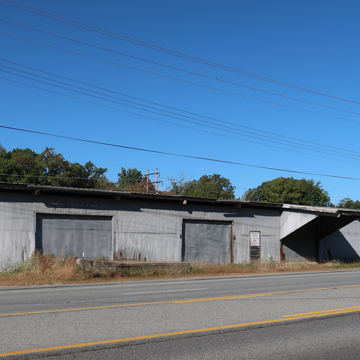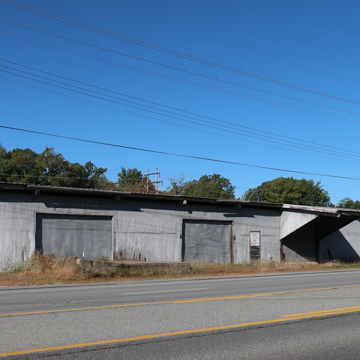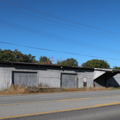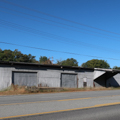A remarkable row of surviving tobacco warehouses from the mid-twentieth century sits just north of Hughesville. Maryland was the last tobacco-growing state to allow loose-leaf or “open” sales where the tobacco was visible in large 50- to 150-pound baskets. This system quickly replaced the “closed” one used since the earliest tobacco-growing days where 600-pound hogshead barrels were sold via sealed bids based on samples graded by a government inspector. The first loose-leaf tobacco auctions in 1939 spurred creation of a row of unassuming industrial buildings on a narrow strip of land next to the railroad tracks in Hughesville. During the four months of the selling season from roughly April to July, this district would be teeming with tobacco farmers and buyers.
The row of warehouses includes a Quonset hut section among a variety of more conventional low-pitched gable roofs. Except for one concrete block warehouse, they all feature corrugated metal sheathing and roofs and heavy timber frame structures to reduce fire hazard. A series of loading bays along Leonardtown Road facilitated truck access. Skylights throughout the interiors allowed better visual inspection of the tobacco before bidding on the lots stacked in narrow rows. These auction houses and warehouses are some of the last surviving structures in Maryland related to tobacco sales, storage, and processing. In 2000 a Tobacco Buyout program spelled the end for already struggling tobacco farming in Maryland, and the last auction was held in 2006. Now these unusual historic structures are vacant or used as flea market spaces, and county and state officials are investigating ways to preserve and reuse them.


















